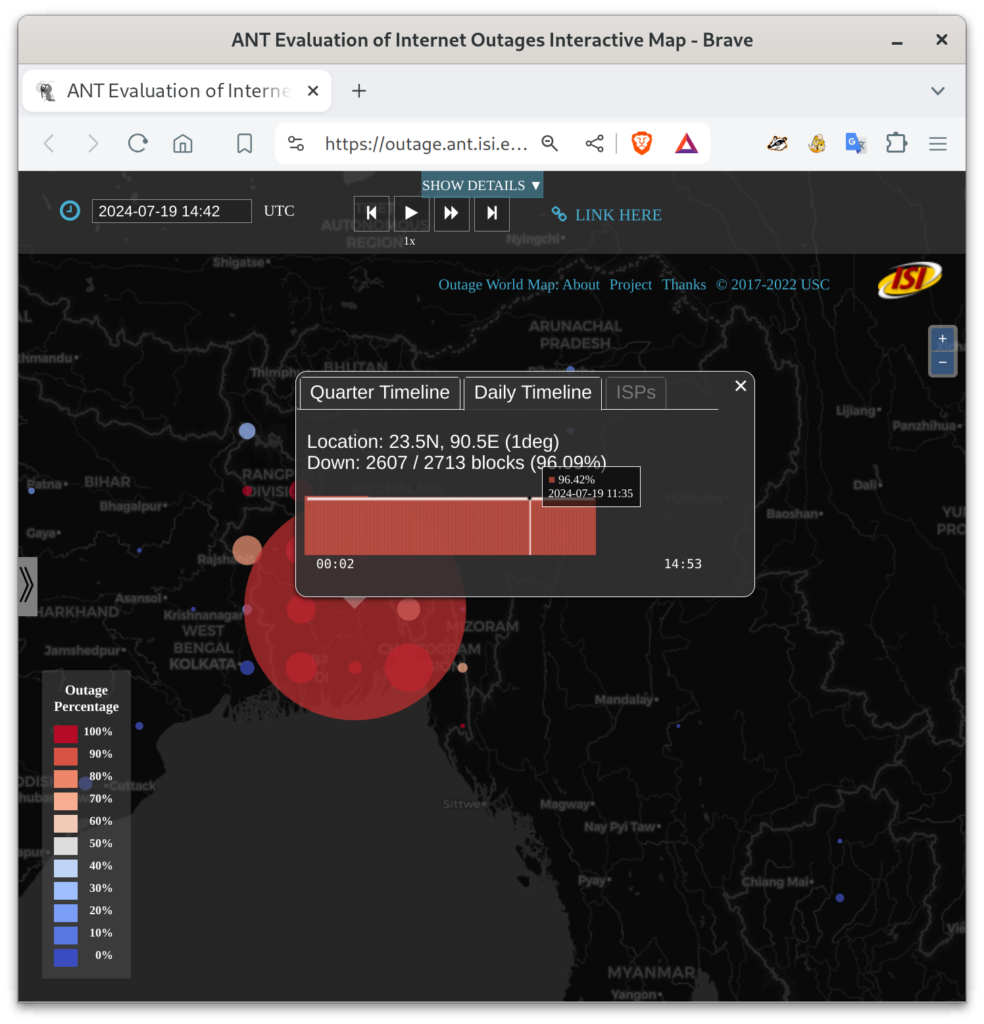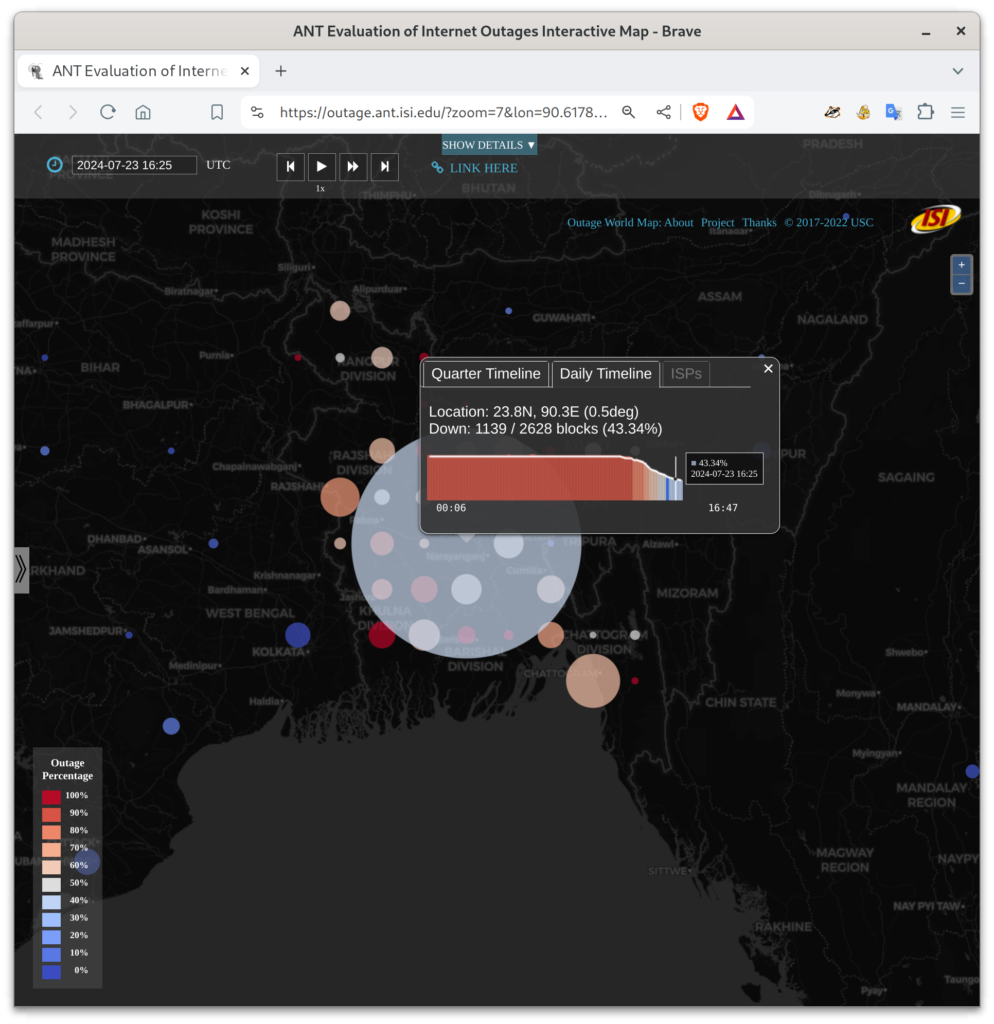There was a huge Internet outage on June 19, 2024. It affected millions of people, interfering with their ability to travel, interact with friends and family, and with businesses to communicate with their customers and place orders. It cost the global economy millions of dollars.
And it had nothing to do with CrowdStrike.
I’m talking about the the 5-day near-total shutdown of the Internet in Bangladesh, from 2024-07-18t15:00Z (9pm July 18 local time in Bangladesh) until about 2024-07-23t13:00Z (7pm July 23 local time). For most of that period, pretty much all Bangladeshi networks were down. People could not communicate with each other. Here are the start, middle, recovery pictures from our blog entry:



These figures show Bangladesh, with circles whose size indicates the number of networks that are out in each part of the country. Circle color indicates the percentage of networks that are out–red is near 100% networks unreachable. My research group measures Internet outages, and you can look at what happened in our website. Red basically never happens for big countries, at least since the 2011 Egyptian revolution.
Bangladesh had civil unrest, protests, and riots due to an unpopular employment law (as reported by many organizations, including the New York Times). The government chose to shut down their Internet (as reported by AP, and others). They restored services on July 24, but I am told they are still blocking several social media services.
What does this have to do with CloudStrike?
Well, nothing. But you may have heard that CloudStrike had a software-update that went wrong, also on July 19. It also interfered with millions of people’s ability to travel, interact with friends and family, and with businesses to communicate with their customers and place orders, as it crashed millions of computers running Microsoft Windows and left them difficult to recover.
But the CloudStrike software glitch was not an Internet outage.
Yes, millions of computers failed. But the Internet was never affected by the failure of CloudStrike computers. Anyone could use the Internet just fine last week, provided they were using services that did not depend on Microsoft Windows. And lots of the computers that failed (like flight status kiosks in airports) were not on the public Internet.
CloudStrike was a massive software failure, but not an Internet outage.
I mention this because I heard multiple media sources discuss the CloudStrike-caused Internet outage. Most prominent was this article by Barath Raghavan and Bruce Schneier on Lawfare (and then reposted on Schneier’s blog), that starts “Friday’s massive internet outage, caused by a mid-sized tech company called CrowdStrike, disrupted major airlines, hospitals, and banks.” They point to “brittleness of infrastructure” as a risk. The article is true, except for the word “Internet”. The New York times called it a “tech outage“, and us in the field should be as careful about our terms.
By analogy, when two Boeing 373 MAX airliners crashed in 2019 and 2020, we did not call out the “massive air traffic control crash”, we correctly pointed at aircraft failures, and eventually at software and design problems in that specific aircraft.
We should not call all computer failures an Internet outage, when the problem is not about network communication. To improve our computing world, we must identify problems correctly.
Because when a nation of 170 million people goes offline, that’s a big deal, too. And that’s not fixable by rebooting.